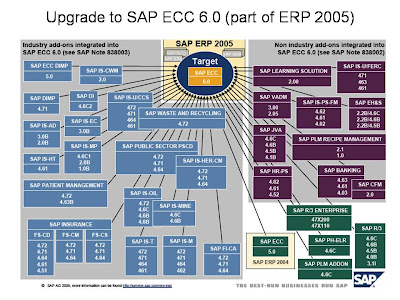ABAP short dumps are something which trouble any SAP user (sometimes help the user to understand the system needs better). We normally do a search for SAP notes or contact SAP to solve these dumps. But hardly takes any chance to understand the meaning of the dumps. Here I am listing some 'famous' ABAP dumps and trying to explain what are they. Please note that the solutions provided here may different from case to case. These should be used just as a 'first aid'.
1) STORAGE_PARAMETERS_WRONG_SET
The problems with the dump STORAGE_PARAMETERS_WRONG_SET are mainly related to the general restrictions of the 32bit OS. You can address up to 4GB of virtual memory. Each process in OS is running in its own context and can address max. 4GB. The parameters which are related to ‘heap memory' ie abap/heap_area_dia, abap/heap_area_nondia, abap/heap_area_total are should be set to 2 GB. Common approaches which we can take for this dump are:
a) Please use in the 'boot.ini' file the switch '/3GB' and restart your whole computer as described in the below SAP Notes:
SAP Note 552209 - Maximum memory utilization for processes on NT/Win 2000
SAP Note 313347 - Windows NT, 2000, 2003: Editions and memory usage.
b) Another way to avoid this problem is to try to add more criteria to your report/program/transaction so that there will be fewer entries that need to be retrieved from your database or buffers. This way, the system would not need to use up much resource to complete the transaction. The query may have been quite big already and the load cannot be accommodated. So please do add more criteria or options so that there will less data to fetch.
c) To decrease the value of the parameters: rdisp/ROLL_SHM, rdisp/PG_SHM
d) Migrate to 64-bit OS (as per SAP Note 931024 and SAP Note 996600)
Leer más ...



 Este manual explica cómo incorporar un campo nuevo a las transacciones FBL5N, FBL1N, FBL3N y similares. Los casos más frecuentes constan en añadir el campo del nombre del cliente, su domicilio o dirección, el comisionista o el cobrador, por ejemplo.
Este manual explica cómo incorporar un campo nuevo a las transacciones FBL5N, FBL1N, FBL3N y similares. Los casos más frecuentes constan en añadir el campo del nombre del cliente, su domicilio o dirección, el comisionista o el cobrador, por ejemplo.






